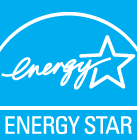What do NAS NASA NASCAR have in common?

Updated 2/10/2018
The other day it dawned on me what do NAS, NASA NASCAR have in common?
Several things in addition to all starting with the letters NAS it turns out.
For example, they all deal with round objects, NAS or Network Attached storage involved with circular spinning disk drives, NASA or National Aeronautical Space Administration besides involved with aircraft that have tires that go round and round, or airplanes circling waiting for landing.
In the case of NASA they are also involved with sending craft or devices to circle other planets or moons and land or crash into them. Sometimes NAS along with other storage systems have disk drives that crash, similar to how NASCAR events see accidents.
NAS

Ceder Lake dirt track 3M NASCAR night (Photo (C) 2008 Karen Schulz)
NASCAR is also involved with vehicles that dont or at least should not fly, however they do go round and round on a track, often paved however sometimes mud or dirt tracks plus high tech exists with computers and various data models, not to mention the NASCAR air force.
In addition to being involved with round objects and activities, all three are also involved in computing, generating, processing, storing and retrieving for analysis of data, not to mention high performance requirements.
NAS based storage can also be relied upon for serving the needs of NASA and NASCAR data and informational needs.
And FWIW, just for fun, look at what you get when you spell NAS, NASA or NASCAR backwards:
RACSAN
ASAN
SAN
Where To Learn More
View additional NAS, NVMe, SSD, NVM, SCM, Data Infrastructure and HDD related topics via the following links.
- NVMe overview and primer – Part I
- Part 1 of HDD for content servers series Trends and Content Application Servers
- Part 2 of HDD for content servers series Content application server decisions and testing plans
- Part 3 of HDD for content servers series Test hardware and software configuration
- Part 4 of HDD for content servers series Large file I/O processing
- Part 5 of HDD for content servers series Small file I/O processing
- Part 6 of HDD for content servers series General I/O processing
- Part 7 of HDD for content servers series How HDD continue to evolve over different generations and wrap up
- As the platters spin, HDD’s for cloud, virtual and traditional storage environments
- How many IOPS can a HDD, HHDD or SSD do?
- Hard Disk Drives (HDD) for Virtual Environments
- Server and Storage I/O performance and benchmarking tools
- Server storage I/O performance benchmark workload scripts Part I and Part II
- How to test your HDD, SSD or all flash array (AFA) storage fundamentals
- What is the best server storage I/O workload benchmark? It depends
- I/O, I/O how well do you know about good or bad server and storage I/Os?
- Big Files Lots of Little File Processing Benchmarking with Vdbench
- Part II – NVMe overview and primer (Different Configurations)
- Part III – NVMe overview and primer (Need for Performance Speed)
- Part IV – NVMe overview and primer (Where and How to use NVMe)
- Part V – NVMe overview and primer (Where to learn more, what this all means)
- PCIe Server I/O Fundamentals
- If NVMe is the answer, what are the questions?
- NVMe Wont Replace Flash By Itself
- Via Computerweekly – NVMe discussion: PCIe card vs U.2 and M.2
- Intel and Micron unveil new 3D XPoint Non Volatie Memory (NVM) for servers and storage
- Part II – Intel and Micron new 3D XPoint server and storage NVM
- Part III – 3D XPoint new server storage memory from Intel and Micron
- Server storage I/O benchmark tools, workload scripts and examples (Part I) and (Part II)
- Data Infrastructure Overview, Its Whats Inside of Data Centers
- All You Need To Know about Remote Office/Branch Office Data Protection Backup (free webinar with registration)
- Software Defined, Converged Infrastructure (CI), Hyper-Converged Infrastructure (HCI) resources
- The SSD Place (SSD, NVM, PM, SCM, Flash, NVMe, 3D XPoint, MRAM and related topics)
- The NVMe Place (NVMe related topics, trends, tools, technologies, tip resources)
- Data Protection Diaries (Archive, Backup/Restore, BC, BR, DR, HA, RAID/EC/LRC, Replication, Security)
- Software Defined Data Infrastructure Essentials (CRC Press 2017) including SDDC, Cloud, Container and more
- Various Data Infrastructure related events, webinars and other activities
- www.objectstoragecenter.com and Software Defined, Cloud, Bulk and Object Storage Fundamentals
- Server Storage I/O Network PCIe Fundamentals
Additional learning experiences along with common questions (and answers), as well as tips can be found in Software Defined Data Infrastructure Essentials book.
What This All Means
Not much actually other than to stimulate some thought, discussion as well as perhaps have some fun with technology during the holiday season.
Im sure if I put some more thought to it, more similarities would or will come to mind.
However, for now, thats it for a quick thought, what similarities do you see or know about with NAS, NASA and NASCAR?
Ok, nuf fun for now, time to work on some other posts, content and projects.
Ok, nuff said, for now.
Gs
Greg Schulz – Microsoft MVP Cloud and Data Center Management, VMware vExpert 2010-2017 (vSAN and vCloud). Author of Software Defined Data Infrastructure Essentials (CRC Press), as well as Cloud and Virtual Data Storage Networking (CRC Press), The Green and Virtual Data Center (CRC Press), Resilient Storage Networks (Elsevier) and twitter @storageio. Courteous comments are welcome for consideration. First published on https://storageioblog.com any reproduction in whole, in part, with changes to content, without source attribution under title or without permission is forbidden.
All Comments, (C) and (TM) belong to their owners/posters, Other content (C) Copyright 2006-2024 Server StorageIO and UnlimitedIO. All Rights Reserved. StorageIO is a registered Trade Mark (TM) of Server StorageIO.








